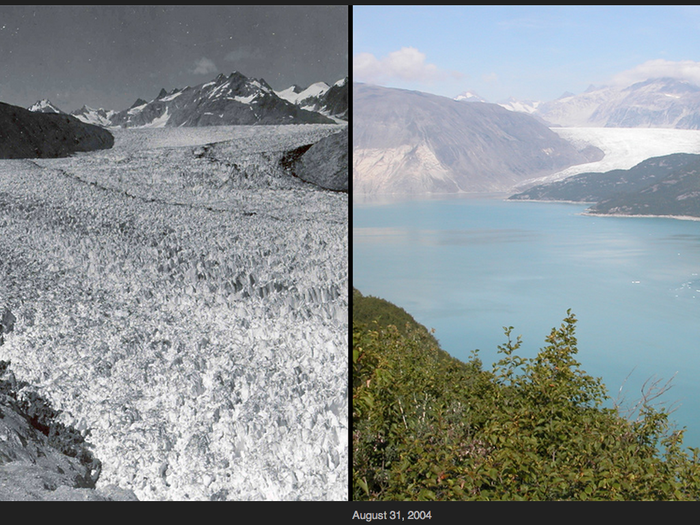- Home
- Science
- Environment
- BEFORE AND AFTER: Photos Show How Climate Change Is Already Melting The World's Glaciers
BEFORE AND AFTER: Photos Show How Climate Change Is Already Melting The World's Glaciers
Pine Island glacier is one of the fastest-moving glaciers in Antarctica. Scientists worry that this will have a major impact on sea level rise. A 2012 image shows a major break forming along the western edge of the glacier.

The crack continued to widen over the next year and in November 2013 a chunk of ice six times the size of Manhattan finally broke off. These calving events happen about every five or six years but this iceberg was about 50% larger than previous ones in the area.
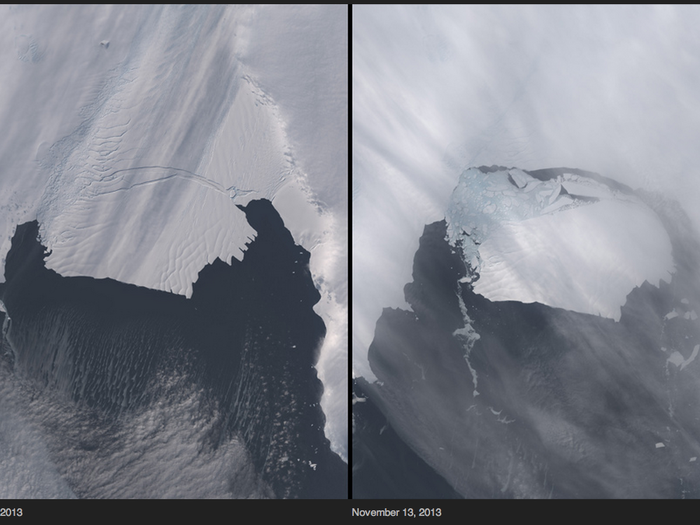
Source: NASA
A series of images shows the retreat of the terminus of Bear Glacier in southern Alaska between 1980 and 2011. As the glacier has melted, chunks of ice have broken off the main mass and formed icebergs in the water.
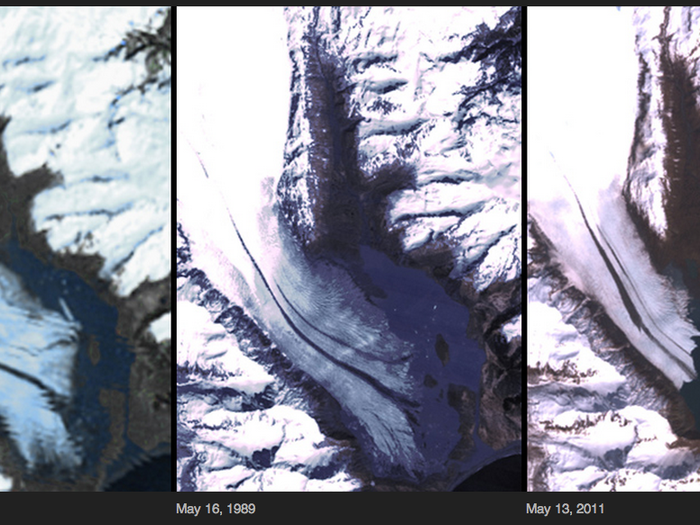
Source: NASA
Another comparison image of Bear Glacier shows rapid shrinkage between 2002 and 2007. Large icebergs are created a giant chunks of ice break off from the main mass.
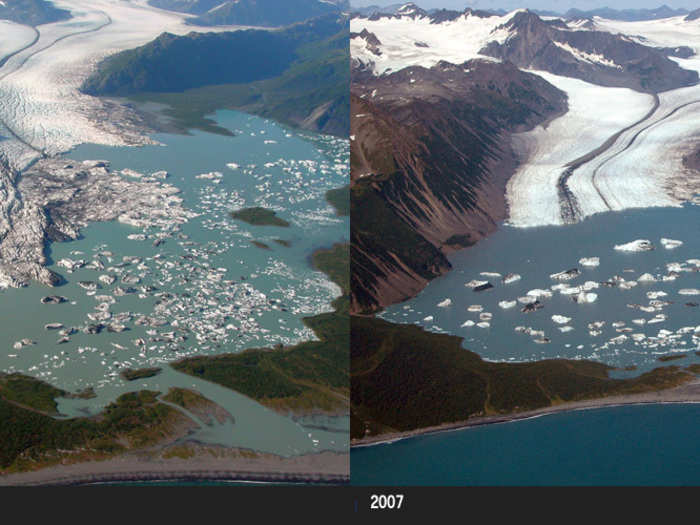
Source: NASA
In August 2010, an iceberg more than four times the size of Manhattan broke off the Petermann Glacier in Greenland, probably the result of warmer water flowing up from the deep ocean.
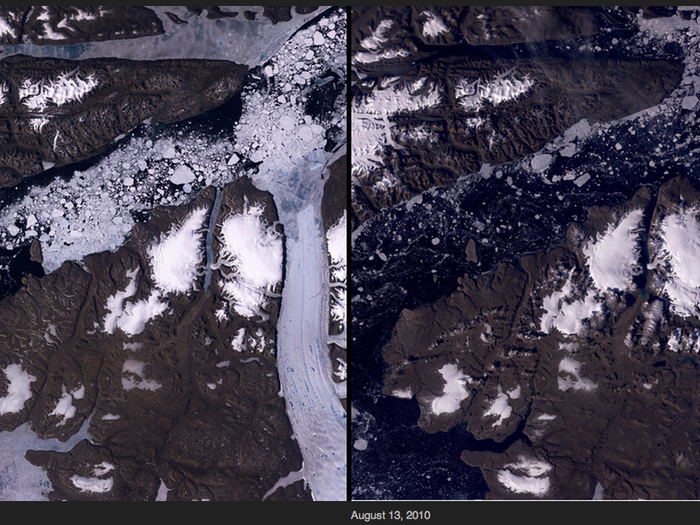
Source: NASA
Two years later, in July 2012, an iceberg roughly the twice the size of Manhattan separated from the "tongue" of Petermann Glacier. The calving event happened farther upstream than previous ones in history, scientists said.
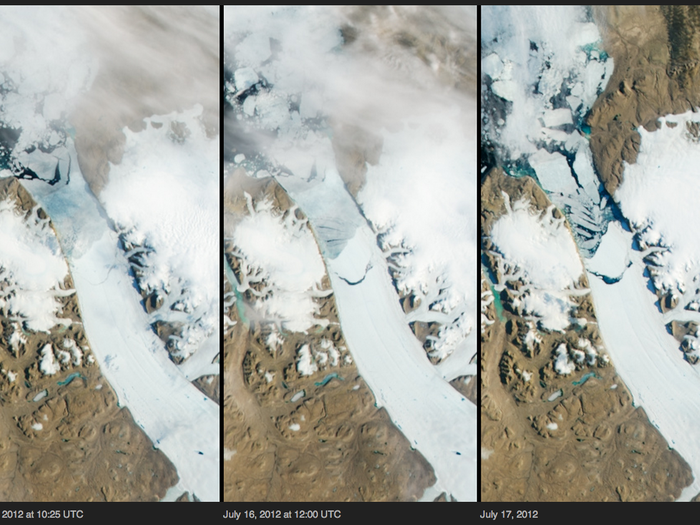
Source: NASA
An image pair shows the disappearance of Northwestern Glacier in Alaska's Kenai Fjords National Park. By 2005, the glacier is completely out of view in the photo.
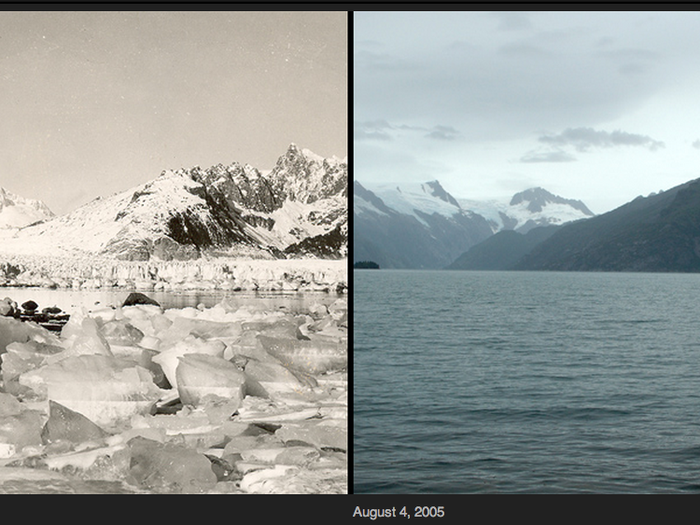
Source: NASA
A late-19th century photograph of Alaska's Muir Glacier shows many icebergs (some nearly 7-feet wide) in the foreground. By 2005, the glacier had retreated by more than 31 miles, beyond the edge of the photo.
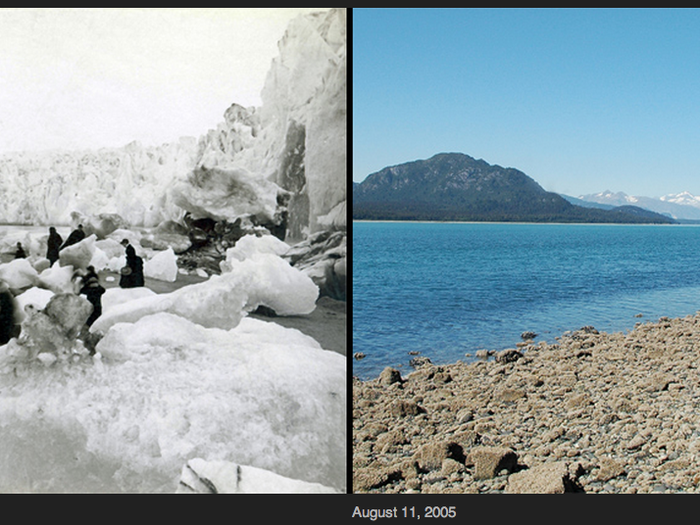
Source: NASA
The Cotopaxi Glacier, which sits on top of one of the world's tallest active volcanoes located in Ecuador, is melting at an accelerating rate. The glacier shrank in mass by 30% between 1956 and 1976 and another 38.5% between 1976 and 2006.
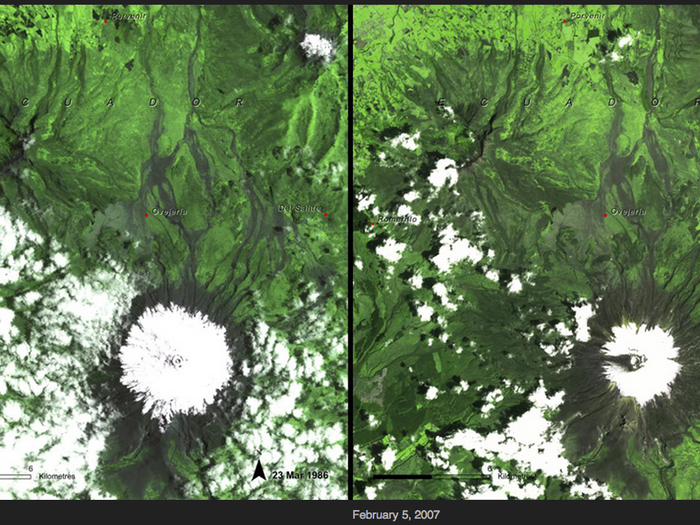
Source: NASA
Comparison photos of McCarty Glacier in southern Alaska between 1909 and 2004 documents a retreat of nearly 10 miles over a time span of 95 years. You can see much more vegetation in the 2004 photo.
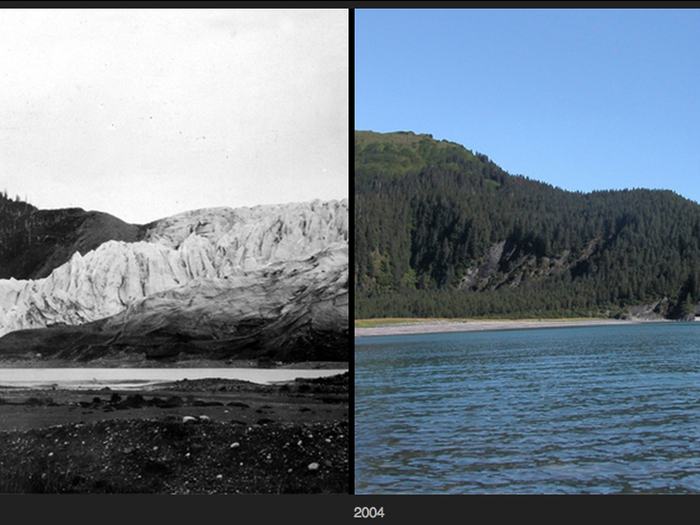
Source: USGS
A pair of photos taken at the same location document significant changes that have occur at Carroll Glacier in Alaska's Glacier Bay National Park and Preserve during the 97 years between 1906 and 2003. The head of Queen Inlet, where the terminus of the glacier sat in 1906, is now filled with sediment.
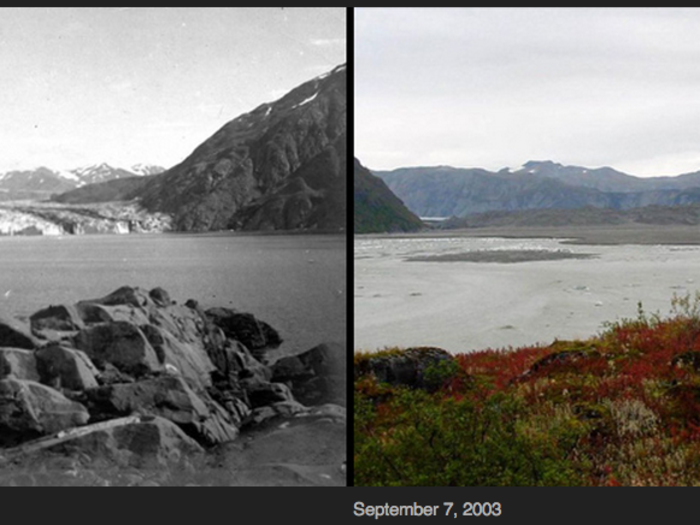
Source: USGS
A pair of images show significant changes at Alaska's Toboggan Glacier. During the 91 years between 1905 and 2000, the glacier thinned by nearly 500 feet and retreated more than .3 miles
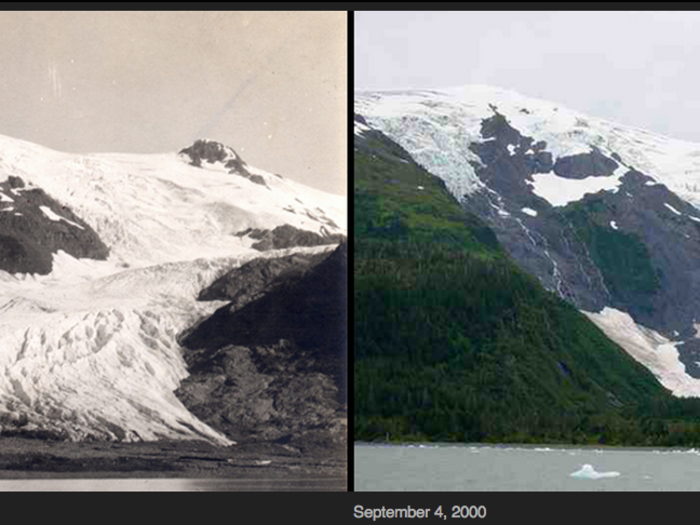
Source: USGS
Holgate Glacier in Alaska retreated significantly during the 95 years between 1909 and 2004.
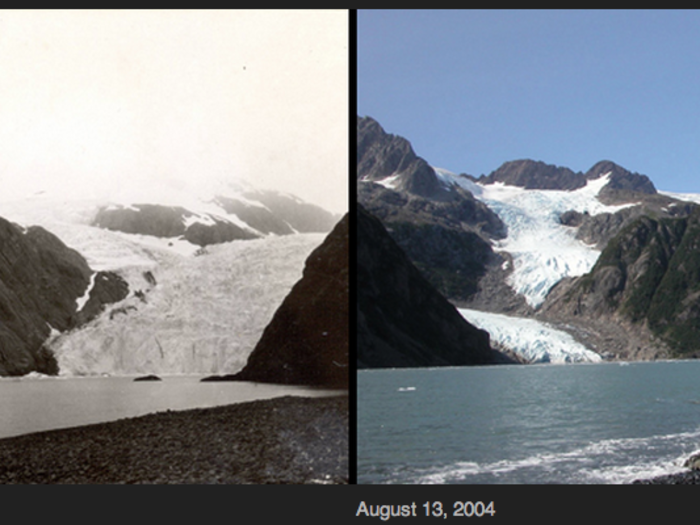
Source: USGS
An image of Imja Glacier in the Himalayas taken in 2007 shows new melt ponds created by the dramatic retreat the glacier's terminus since 1956.
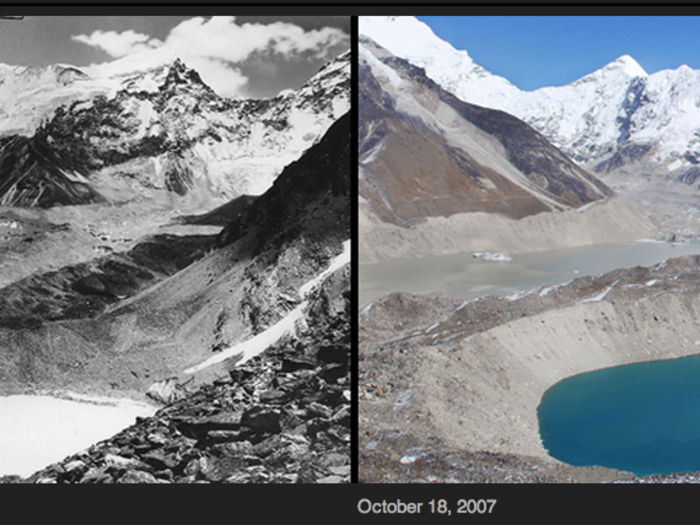
Source: NASA
Before and after images show the decline of the icecap on Mount Kilimanjaro, a dormant volcanic mountain in Tanzania.
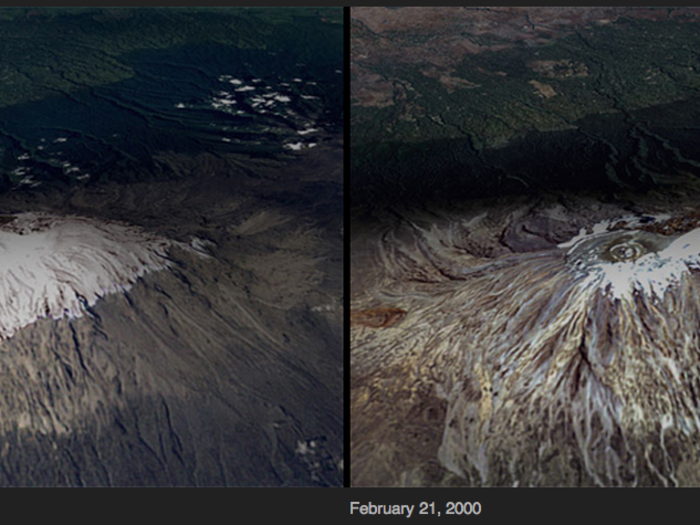
Source: NASA
Matterhorn, one of Europe's tallest peaks, located in the Alps on the border between Italy and Switzerland, is eroding as a result of melting glacier water at the summit.
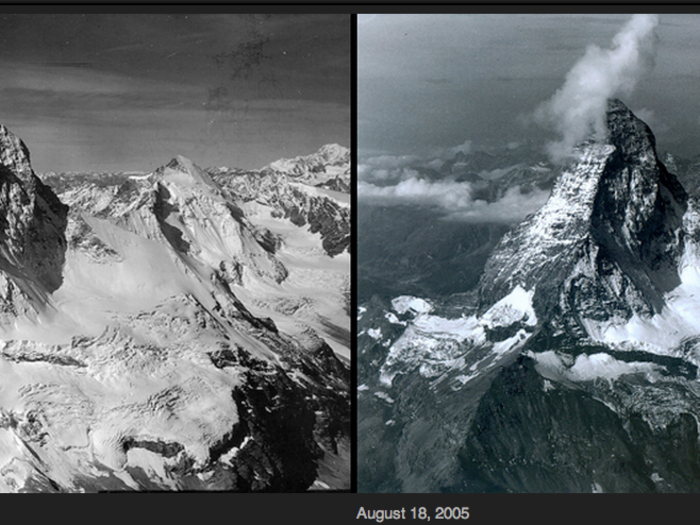
In the 88 years between these two photos of Alaska's Pedersen Glacier, the icebergs disappeared and the lake on which they were floating has filled in with sediment and grasses.
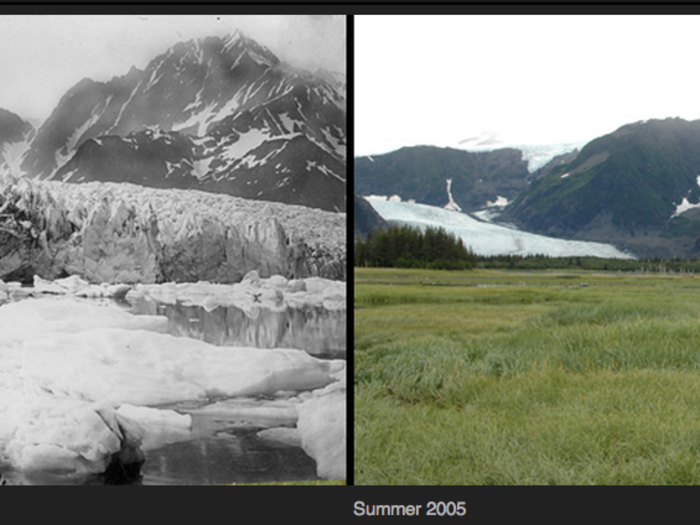
Climate change is impacting the Earth in many ways.
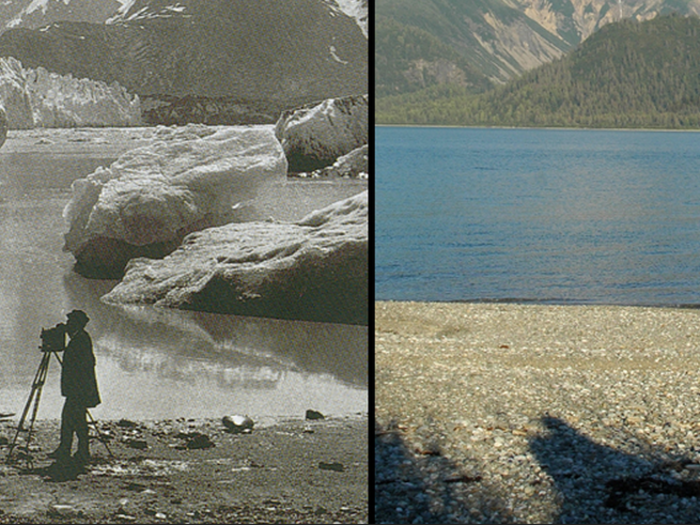
Popular Right Now
Popular Keywords
Advertisement
